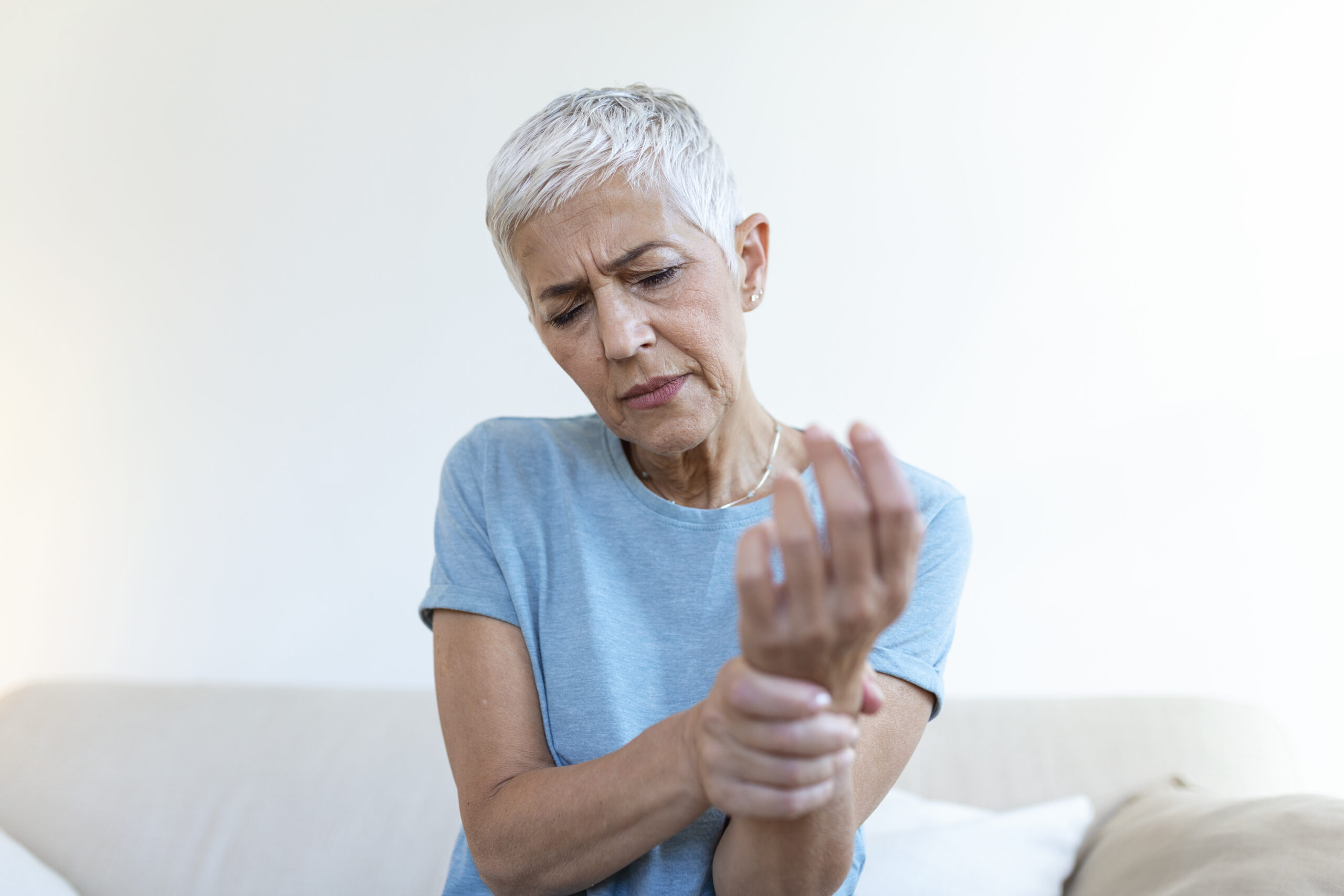What’s the Treatment for Rotator Cuff Injuries?

The best rotator cuff injury treatments include plenty of rest, physical therapy and the application of ice on the area. These techniques are non-invasive, safe and can produce long-term results, if you address your concerns early. However, surgery may be recommended for severe cases. This blog discusses the non-surgical treatment options for rotator cuff pain so you can decide before the condition worsens.
Note:
The rotator cuff keeps your shoulder in place and enables you to move your arms. Also, rotator cuff tears can increase with time. Thus, you should consult with a healthcare provider if you have nagging shoulder pain so much so that moving your arm seems a challenge.
Also Read: Rotator Cuff Injury & the Benefits of Physiotherapy
Understanding Rotator Cuff Injury Treatment
There are two types of rotator cuff injury treatment options- surgical and non-surgical.
Most patients recover from the non-surgical treatment while about 10-15% of patients may need surgery. Non-surgical treatments do not heal the condition completely but relieve pain and improve the function of your shoulders.
How to Relieve Rotator Cuff Pain Without Surgery?
Four tendons make the rotator cuff. These tendons enable us to lift arms overhead and rotate the shoulder while keeping the shoulder joints stable. Rotator cuff injury occurs when there’s a tear/inflammation in one of the tendons which may spread to the entire shoulder.
Young players and athletes who indulge in overhead sports like swimming and tennis are highly prone to rotator cuff injuries. It can affect people who perform overhead motions daily like painters. Older people are also at higher risk due to their weakening tendons and muscles.
Anyone can get a rotator cuff injury. Here are some safe treatment options for you to manage the pain and restore shoulder mobility.
Take Enough Rest
Rotator cuff pain occurs because of an inflammation or wear and tear of the rotator cuff tendons. It needs an adequate amount of rest to repair its damaged tissues and restore the shoulder’s functionality. You should refrain from strenuous physical activities and modify daily tasks to reduce stress on your shoulders.
How does proper rest impact rotator cuff pain?
- Rest reduces inflammation of tendons which relieves pain and boosts healing.
- The body can focus on repairing damaged tissues.
- It prevents further damage to the rotator cuff.
- You can restore shoulder mobility and get rid of the discomfort.
So, you must rest at least for a few days or weeks to reduce the symptoms of rotator cuff injuries. The amount of rest you need depends on the severity of your injury.
If the symptoms are new, you may need to rest your shoulder completely for a few days. However, if it’s a chronic injury, you may need to make some lifestyle changes and indulge in physical therapy for optimum recovery.
Also Read: What’s the Treatment for Rotator Cuff Injuries?
Apply Ice
Ice application is one small yet crucial part of a comprehensive treatment plan for rotator cuff injuries. If you apply it the right way, the cold application helps reduce inflammation, muscle spasms and pain associated with rotator cuff injuries.
How to apply ice?
- Wrap the ice with a thin cloth and apply it over the affected shoulder. Direct application of ice may damage the tissues.
- Raise the shoulder above your heart.
- Keep the ice pack on for 15-20 minutes.
- Repeat 2-3 times a day.
The application of ice can reduce blood flow to the affected area which reduces swelling. It relaxes tight muscles and numb endings, which control the pain.
Get Physical Therapy
In most cases, healthcare practitioners recommend physical therapy as the first line of treatment for rotator cuff injuries. Physical therapists can help restore the optimal functional abilities of your shoulder through exercises, stretches and the above-mentioned approaches. They focus on strengthening your rotator cuff tendons, shoulder muscles and joints while involving you in your healing process.
Rest is an important stage in the initial recovery phase. However, you need to gradually return to an active lifestyle and maintain the mobility of your shoulders. Complete rest for a longer period of time can make it harder for you to move the shoulder at all.
Physical therapists guide you through a personalized exercise program which reduces your pain, improves your range of motion and strengthens rotator cuff muscles.
Also Read: Why Get Rotator Cuff Treatment at Physiotherapy Clinics?
Is Physiotherapy the Best Treatment for Rotator Cuff Injury?
Physiotherapy/physical therapy helps you manage rotator cuff pain and restore normal shoulder mobility. You can return to your work or game after the physio improves your shoulder’s range of motion in the sessions. Most people recover through physical therapy and specific lifestyle changes while surgery is recommended for a few severe cases.
How does physical therapy relieve rotator cuff pain?
Injury assessment and diagnosis
Physios assess your symptoms, medical history and lifestyle to understand the underlying cause of your pain. They run physical tests like an x-ray to diagnose the condition, its cause and severity.
Pain Management
Therapists may combine multiple techniques like ice application, electrotherapy, and massage therapy along with exercises to reduce your pain and discomfort.
Improved Range of Motion
You can gradually move your arm and shoulders freely as the targeted exercises improve your range of motion.
Elevated Strength
You can maintain the optimal strength of your shoulder muscles and avoid the risk of developing future injuries.
Education and Prevention
You can learn about the condition and how you can prevent it from recurring. The physios may teach you proper body mechanics that keep rotator cuff injury at bay.
Common Rotator Cuff Exercises for All
The following exercises help reduce pain and improve the shoulder’s range of motion.
Note: Do the exercises under the supervision of an expert initially before you start doing them completely on your own.
Pendulum swing
- Keep your good arm on a table while sitting on a chair or standing, depending on what your therapist says.
- Lean a bit forward.
- Now let the affected arm hang straight down. Let it relax in that position.
- Swing the relaxed arm in small circular motions. Do it in a reverse circle as well followed by backward-forward motions and side-to-side movements.
- Do this 3 times a day for about 5 minutes.
Shoulder Shrugs
- Stand or sit straight with feet flat on the floor.
- Raise your shoulders near your ears.
- Keep elbows straight.
- Hold for 30 seconds. Exhale and inhale slowly.
- Relax and repeat 8-10 times every day.
Wall slides
- Stand facing a wall with feet about shoulder width apart.
- Press your arms against the wall with the little finger of both hands touching the wall.
- Your palms should face each other.
- Push your forearms gently towards the top against the wall.
- Hold the position for a few seconds.
- Gently slide your forearms back to their starting position.
- Repeat 8-10 times.
Every person is different and so is their injury. A painter can also have rotator cuff tears but may not receive the same treatment methods as an athlete would. The physiotherapist evaluates the symptoms and lifestyle to personalize a comprehensive and targeted treatment plan. If you are in pain and experiencing shoulder movement problems, see a licensed physiotherapist as soon as possible. Multidisciplinary centres like Physiotherapy First can diagnose, treat and prevent rotator cuff injuries eliminating the need for surgeries.
You might also like:
Blog Categories
- Acupuncture Treatment (10)
- Ankle Sprain (1)
- Arthritis Treatment (1)
- Back Pain (23)
- Chiropractic Care (38)
- Tennis Elbow (1)
- Chronic Pain (5)
- COVID-19 (1)
- Custom Orthotics (6)
- Dizziness (4)
- Exercises (12)
- Foot Orthotics (6)
- Hamstring Stretches (2)
- Info Articles (3)
- Kids Injury (1)
- Laser Therapy (4)
- Massage Therapy (21)
- Neck Pain (16)
- Orthopedic (1)
- Osteoarthritis (5)
- Osteopathy (3)
- Pain Management (17)
- Physiotherapy Benefits (44)
- Physiotherapy Clinic (6)
- Physiotherapy Exercises (12)
- Physiotherapy Tips (25)
- Physiotherapy Treatment (100)
- Rotator Cuff (2)
- Shin Splints (1)
- Shoulder (2)
- Spine (4)
- Sports Physiotherapy (1)
- Uncategorized (1)
- Vestibular Physiotherapy (2)
- Work From Home (2)


